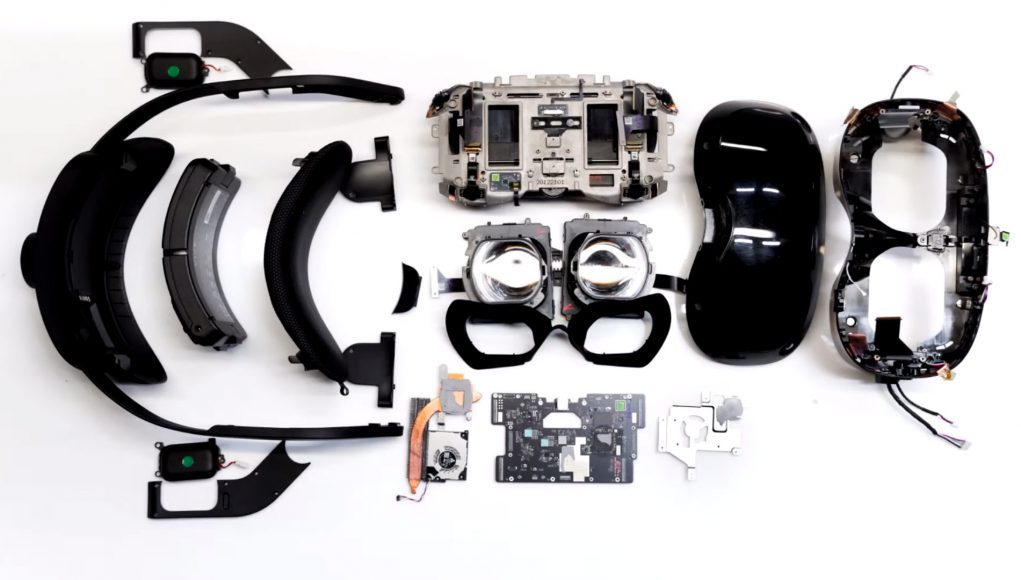In preparation for its June 27th ship date, HTC released a full teardown of its latest enterprise-focused standalone, Vive Focus 3.
Shen Ye, HTC Vive Head of Global Hardware Products, takes us through the whole dismantling process, something that he warns shouldn’t be tried at home since it will undoubtedly invalidate your warranty—not something you want to do with the $1,300 headset and controllers.
“We use incredibly precise machines to calibrate the headsets, and there is no way to replicate the precision by hand alone,” Ye cautions before heading into the teardown proper. The teardown is of a pre-production unit, which is said to look slightly different on the outside in terms of finish, but is “pretty much the same on the inside,” Ye says.
We’ve linked the full teardown below, but also included a written recap if you’re unable to watch the video.
Ye first explains a bit about Vive Focus 3’s specs, including its headstrap design, integrated audio solution, and hot-swappable battery, which is mounted on the back of the headstrap.
Like all batteries, it’s unwise to dismantle any further than popping it out of the device itself, Ye warns. The 26.6Wh battery features a curved design to better fit inside the back part of the headstrap, and features USB-C fast charging, which can charge from 0 – 50% in 30 minutes, Ye says. Owing to its lithium polymer gel design, it’s said to be more leak and swelling resistant than traditional lithium polymer liquid cells.
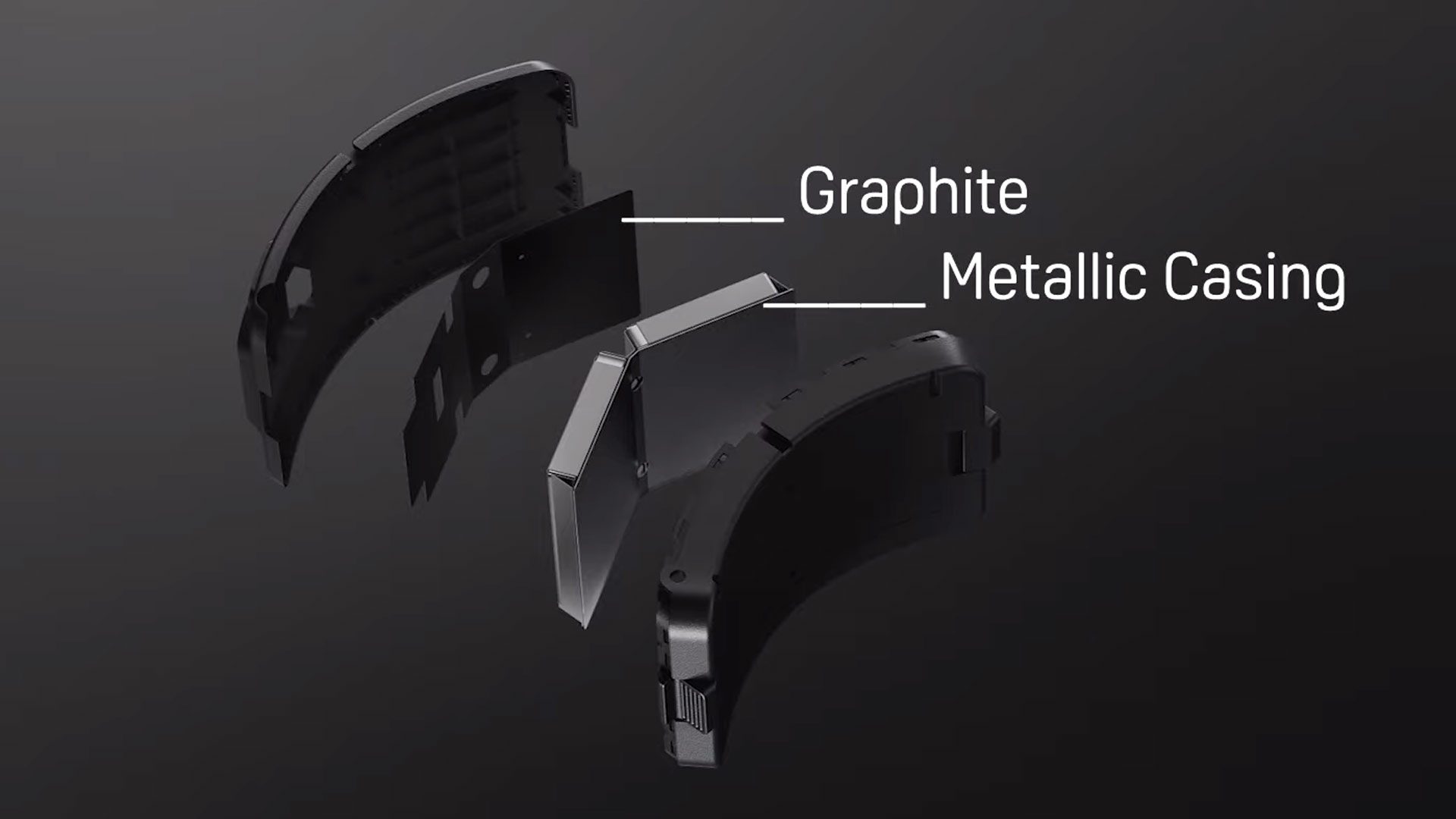
Ye also goes through a few notable features, most of which can be summarized in the headset’s spec sheet. If you want a deeper dive into each component, check out our full breakdown here.
| Vive Focus 3 Specs | |
| Resolution | 2,448 x 2,448 (6.0MP) per-eye, LCD (2x) |
| Refresh Rate | 90Hz |
| Lenses | Dual-element Fresnel |
| Field-of-view | 120° horizontal |
| Optical Adjustments | IPD |
| IPD Adjustment Range | 57–72mm |
| Processor | Snapdragon XR2 |
| RAM | 8GB |
| Storage | 128GB (expandable via MicroSD to 2TB) |
| Connectors | USB-C (2x) |
| Battery Life | 2 hours |
| Tracking | Quad on-board camera (no external beacons) |
| Controllers | Vive Focus 3 controllers, rechargeable battery |
| Audio | In-headstrap speakers, 3.5mm aux output |
| Microphone | Dual microphone |
| Pass-through Cameras | Yes |
With precision screwdriver in hand, we get the first glimpse under the plastic headstrap, which hides the power cables running to the back-mounted battery, the in-strap speakers, and the audio cables that connect them to the mainboard sitting at the front of the headset. That white ring at the headstrap swivel is a special polymer that’s designed for strength, Ye explains.
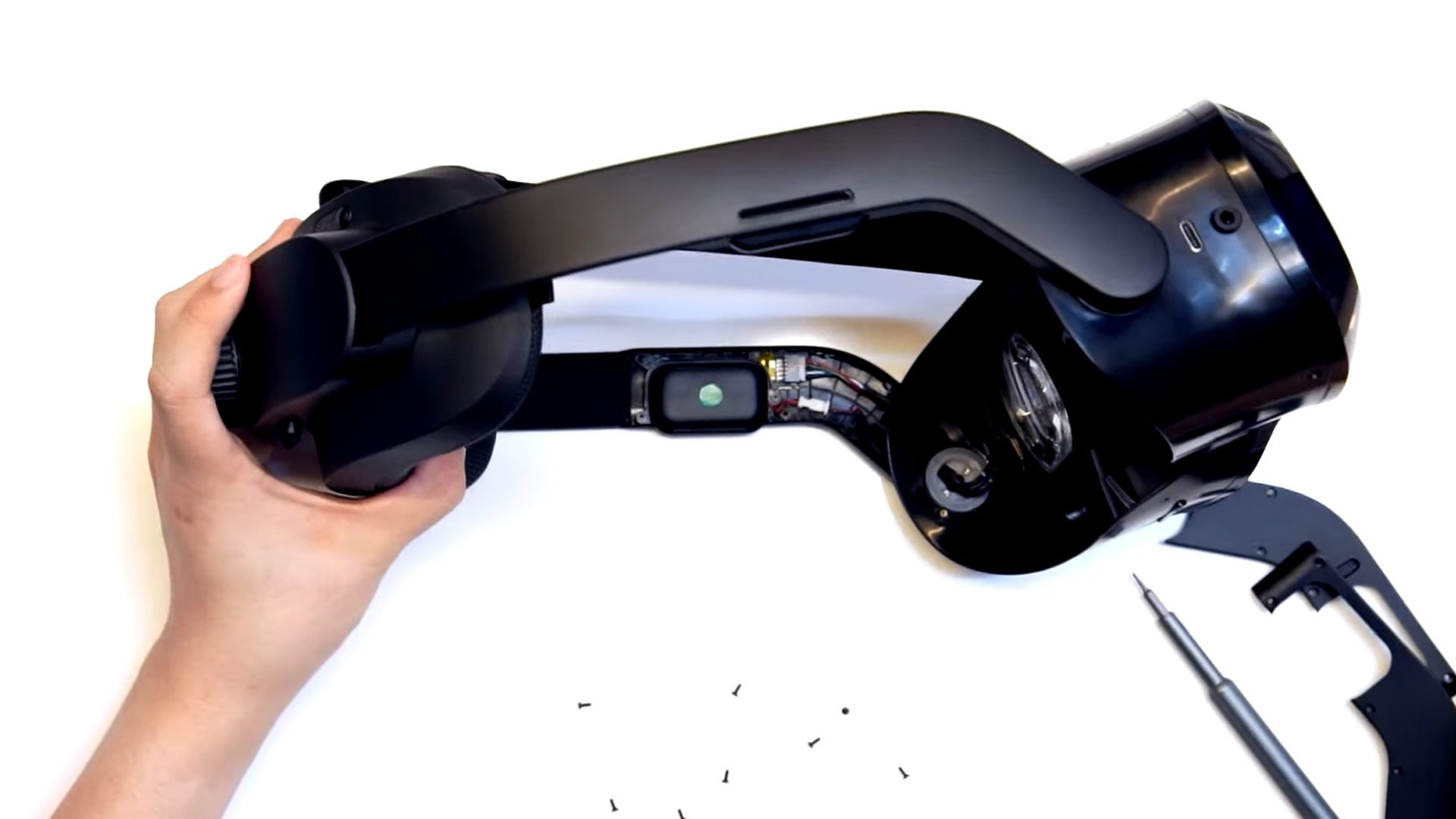
Next up, Ye detaches the faceplate by removing a few screws from the lens-side of the headset and some hidden inside the USB-C accessory port, which is held shut with magnets. Here, we get our first look at the mainboard, 15W copper cooling heat pipe, brushless fan, and the lattice of ribbon cables connecting everything together.
Ye doesn’t mention exactly how many tiny screws are involved in these next dismantling steps, but it’s probably a lot, as the heat pipe and fan need to be well attached to the Qualcomm Snapdragon XR-2 chipset.

After removing some ribbon cables, the housing and internals can be separated. A few more connectors and the main PCB can be removed from the magnesium alloy frame too, something that’s “20% lighter and 500% stronger than traditional plastics,” Ye says.
The magnesium alloy frame is also useful insofar it can dissipate heat from the four outward-facing camera sensors, which handle both controller tracking and positional room-scale tracking for Vive Focus 3.
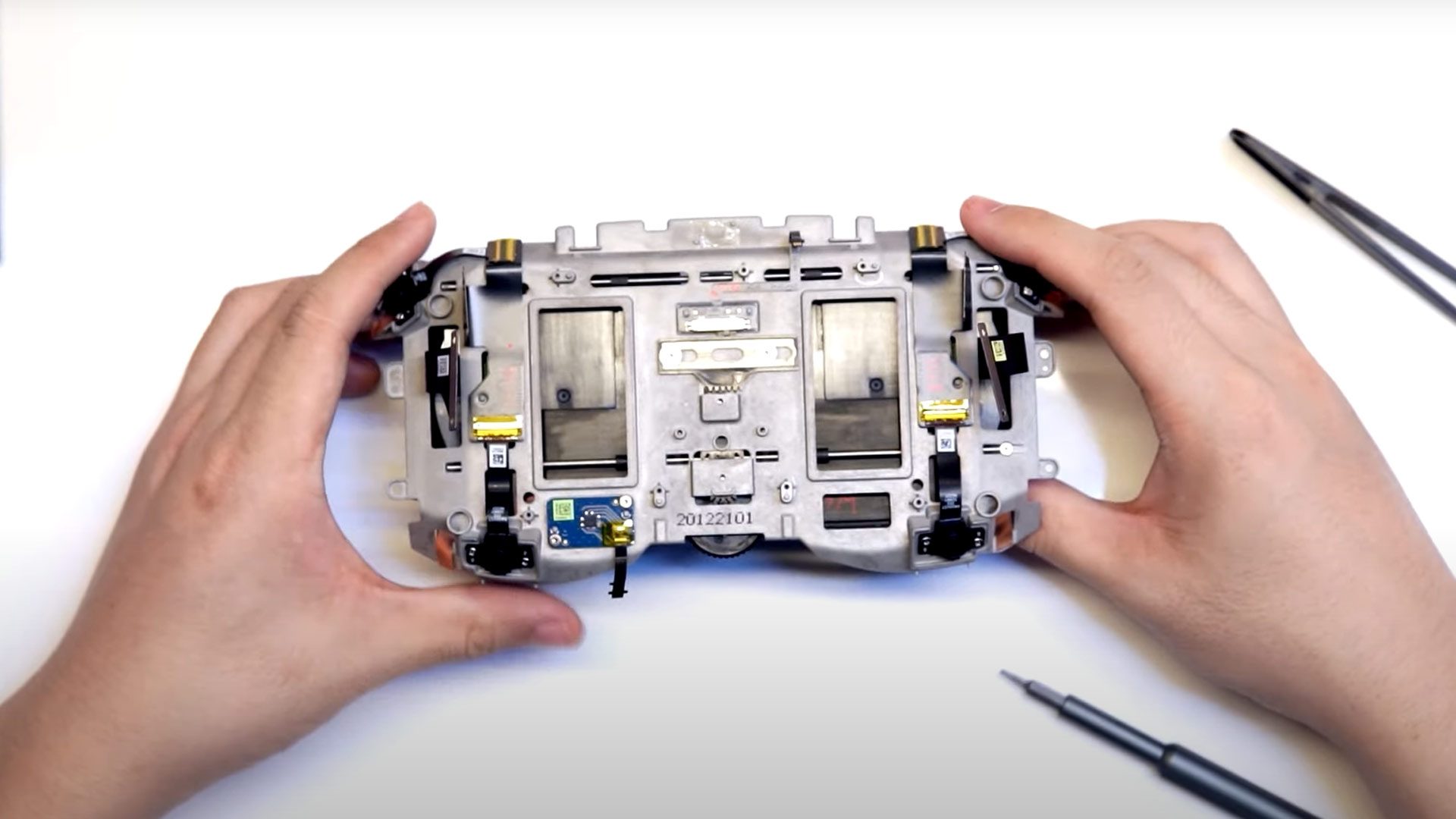
Next up is the optics and displays, which are sandwiched together. Those little arms in the center featuring small teeth are used to adjust the displays for each users’ individual interpupillary distance (IPD). It’s a dual-element lens design, Ye tells us, which allows for a 120-degree horizontal field of view (FOV).

Flipping the whole assembly around, and Ye then detaches the display from the lens housing, revealing the 2,448 x 2,448 LCD.
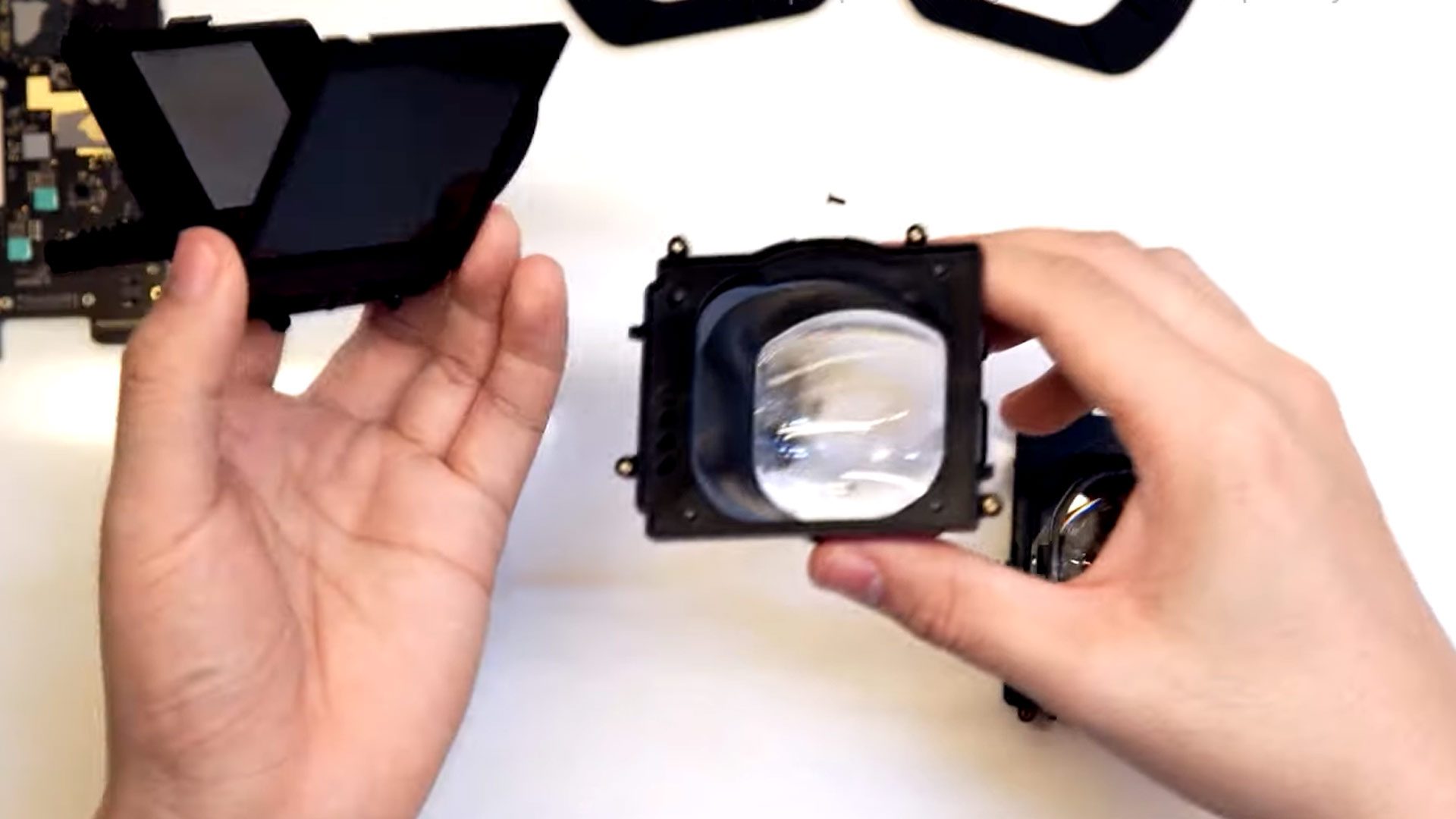
That’s the extent of the headset teardown; Ye moves on to take apart the Vive Focus 3 motion controller. Popping off the handle’s outer plastic and top with a spudger, we get the first glimpse at the controller’s capacitive sensors, which sense when your finger is resting on a button or area of the controller.
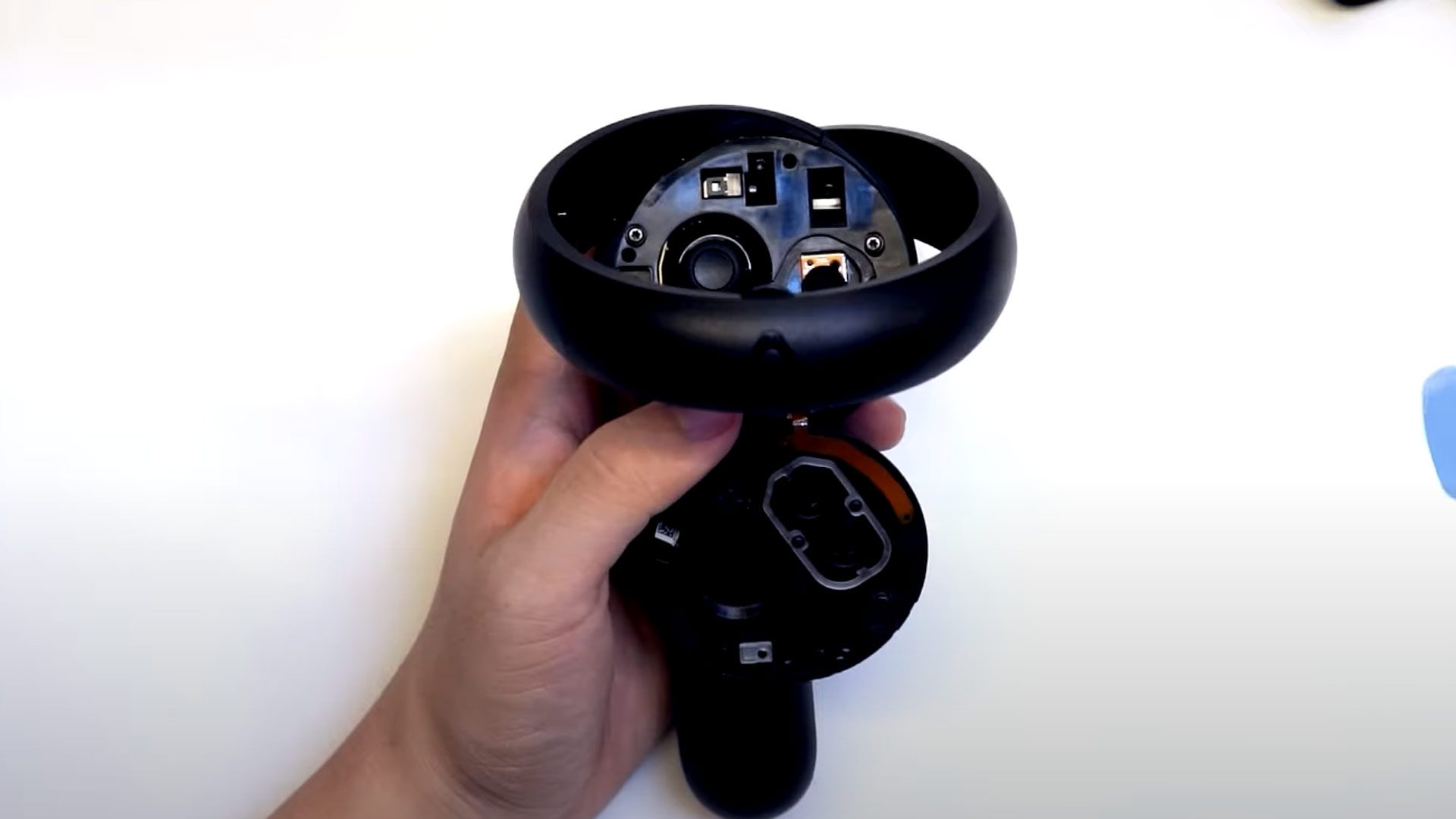
More screws, more connectors, and the top tracking ring can be removed from the body and bisected, revealing the internal IR LED markers that the headset’s camera sensors use to track the controller. There’s five on the inside of the ring as well, he says, which was included to improve tracking performance.
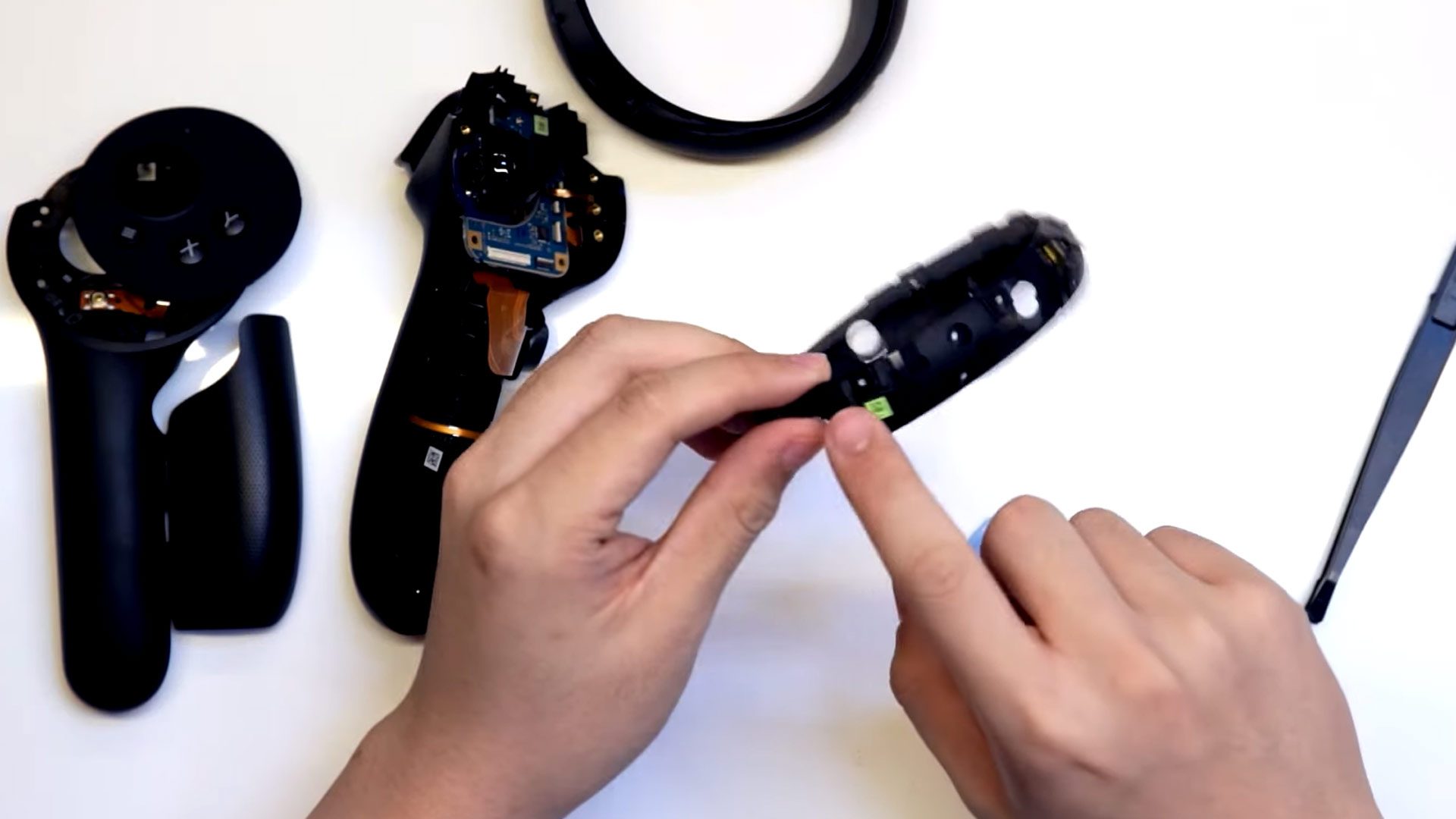
Back at the controller’s handle, a stiff pull is used to pop off the joystick. Multiple screws hold the upper assembly, which is attached to the trigger button. As it goes, everything seems to come off with the removal of only few screws.
Here’s the full exploded view of the controller, showing (among everything else) the mainboard and battery housing.
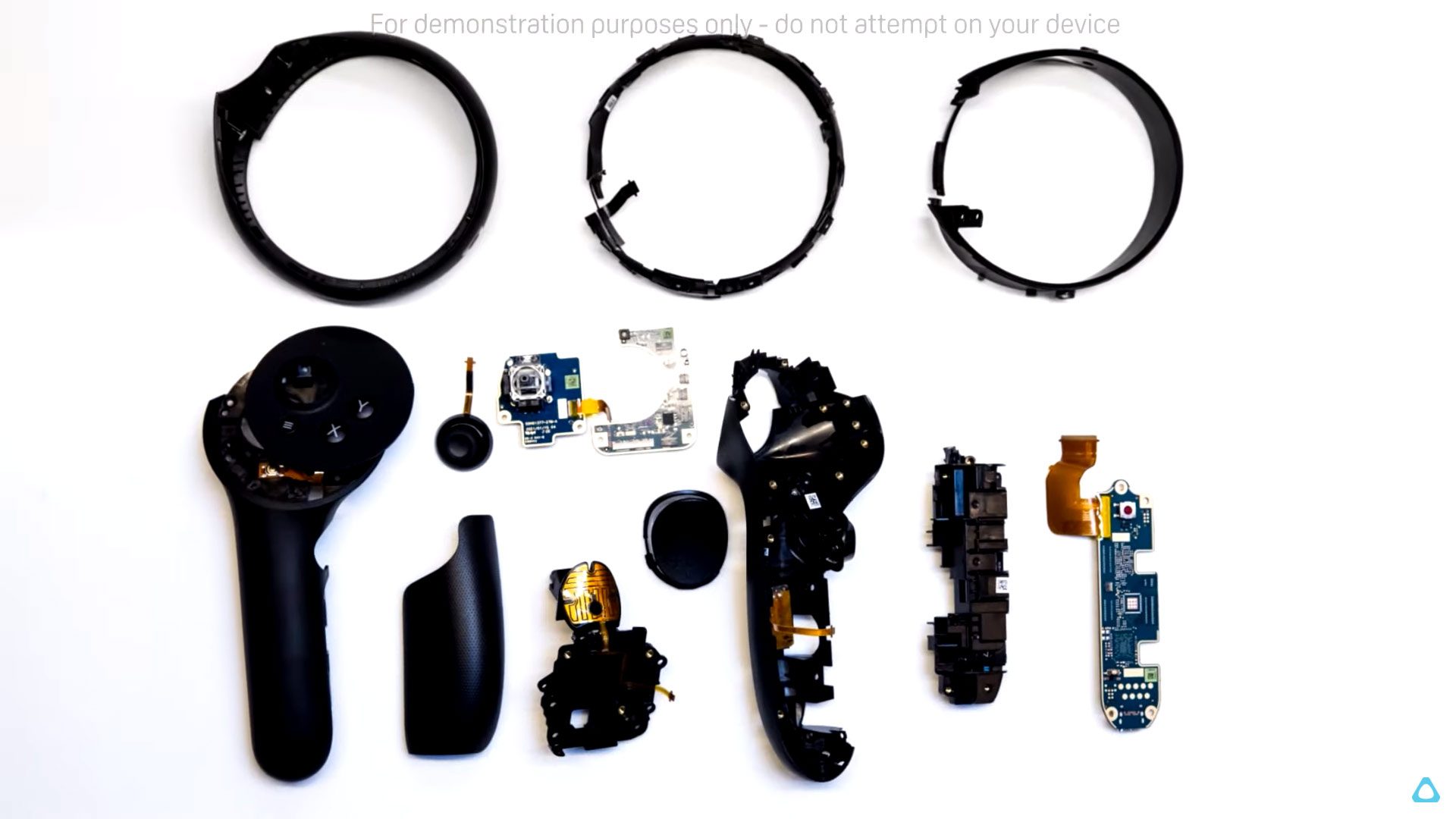
And that’s it for the Vive Focus 3 teardown. Again, if you want a deeper dive on the specs, software, enterprise device management, app store, and more, click here to learn more.

